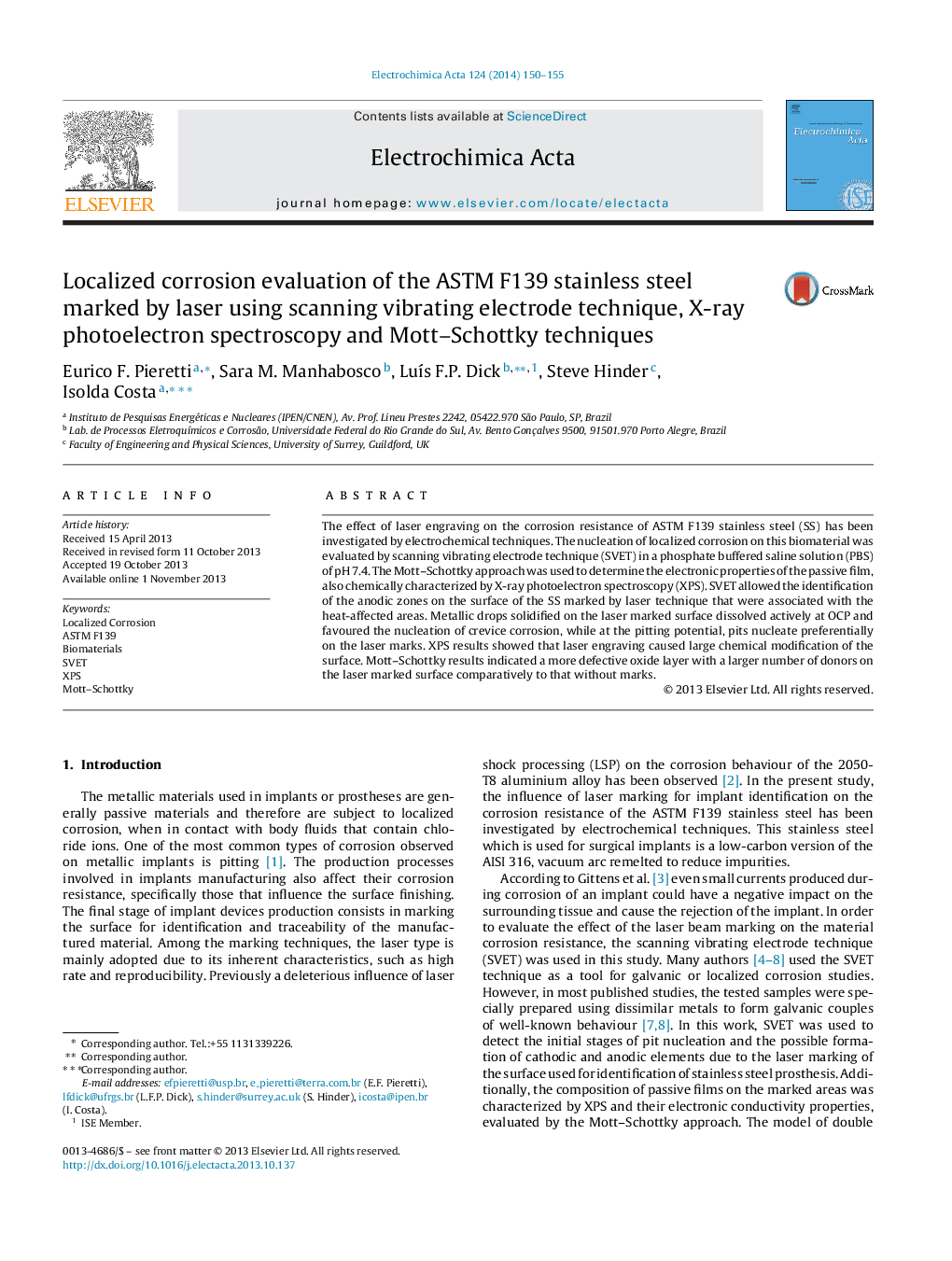| Article ID | Journal | Published Year | Pages | File Type |
|---|---|---|---|---|
| 186349 | Electrochimica Acta | 2014 | 6 Pages |
•The effect of laser engraving on the corrosion resistance of the ASTM F139 was studied.•Scanning vibrating electrode technique was used to identify the anodic zone.•Laser engraving of austenitic stainless steels produces highly defective surfaces.•Laser engraving causes large chemical modification of the surface.•Pitting nucleates at the interface between laser affected and unaffected areas.
The effect of laser engraving on the corrosion resistance of ASTM F139 stainless steel (SS) has been investigated by electrochemical techniques. The nucleation of localized corrosion on this biomaterial was evaluated by scanning vibrating electrode technique (SVET) in a phosphate buffered saline solution (PBS) of pH 7.4. The Mott–Schottky approach was used to determine the electronic properties of the passive film, also chemically characterized by X-ray photoelectron spectroscopy (XPS). SVET allowed the identification of the anodic zones on the surface of the SS marked by laser technique that were associated with the heat-affected areas. Metallic drops solidified on the laser marked surface dissolved actively at OCP and favoured the nucleation of crevice corrosion, while at the pitting potential, pits nucleate preferentially on the laser marks. XPS results showed that laser engraving caused large chemical modification of the surface. Mott–Schottky results indicated a more defective oxide layer with a larger number of donors on the laser marked surface comparatively to that without marks.
Graphical abstractSEM image of pits found at the centred marked area, where the laser beam focused twice.Figure optionsDownload full-size imageDownload as PowerPoint slide
